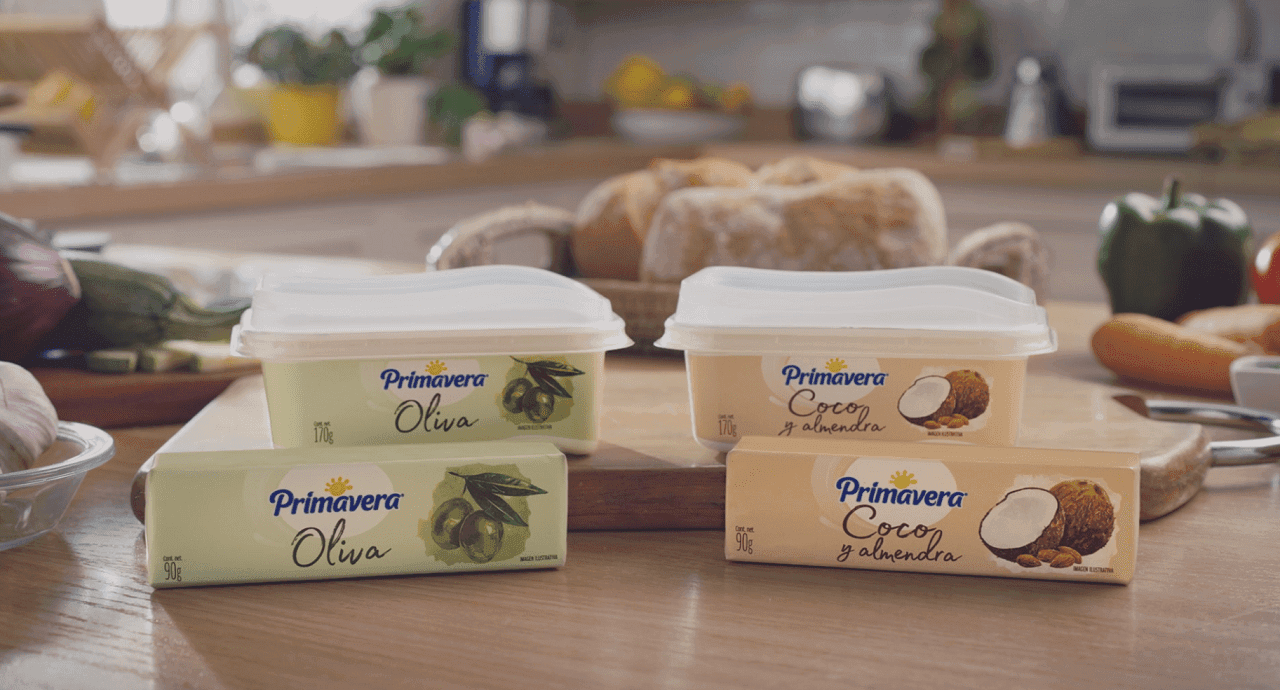Cases
MCC label solution protects product with added visual enhancements
Upfield and the Primavera® brand partnered with MCC to make numerous improvements to their margarine labels

Share
The solutions and innovations that MCC offers have helped customers across many market segments and geographical regions. Our labels not only elevate the visual appeal of products but can also align decorations with the preferences and lifestyles of customers. Healthy eating has been a growing concern for decades and plant-based nutrition has been embraced by people around the world for both nutritional and ethical reasons.
Unique solutions
Upfield is the largest plant-based consumer product company in the world. The company sells plant-based spreads under various brands throughout the world. Our partnership with Upfield allows us to present unique solutions to their management team to improve product presentation, material usage and product protection.
The printing challenge
For many years, the laminated structure for margarine wrappers was inks, primer, 6.35 microns aluminum foil, water based adhesive and 40 g/m² grease proof uncoated paper. Suppliers for each of these materials came from numerous countries and added complexity to the supply chain. Another aspect of the challenge came from another common complaint that their current wrapper had poor printing quality, material curling and in some cases delamination.
Poor printing quality
- Since the paper was uncoated and the foil only 6.35 microns, the surface of the lamination was poor, so at the moment of printing the graphics would present heavy pinholes, giving a very bad appearance.
Curling Material
- The fibers of the uncoated paper were very open being susceptible to present curling with minimal climate changes.
A 4 step solution
In order to solve the wrapper problems, many improvements were made. The first step was to change from uncoated paper to coated paper, this gave the structure a smooth surface which eliminates the pinholes completely.
The challenge that was overcome was to find a 40 g/m² paper with grease proof coating. Our team produced an FDA grade grease proof agent by developing a water-based dispersion that can be applied via rotorgravure in-house.
These developments led to the final, more simplified four step process:
- Laminate aluminum to 40 g/m² coated paper using water base adhesive on the coated side
- Apply the grease proof agent ensuring it is completely dry
- Rotogravure Printing
- Embossing and slitting
Weatherproof packaging
Now, as the paper is coated and this paper has very closed cellulose fibers, the curling effect has been eliminated. In summary: one side coated and laminated against aluminum, and the other side of the paper coated with the grease proof agent, seals the paper and makes it weatherproof. This new technology has also allowed us increase sales with other customers for this kind of flexible packaging. Customer rejections have decreased from 9.8% to almost zero.
We’re excited to help Upfield improve their packaging and share this story as inspiration for further product improvements.